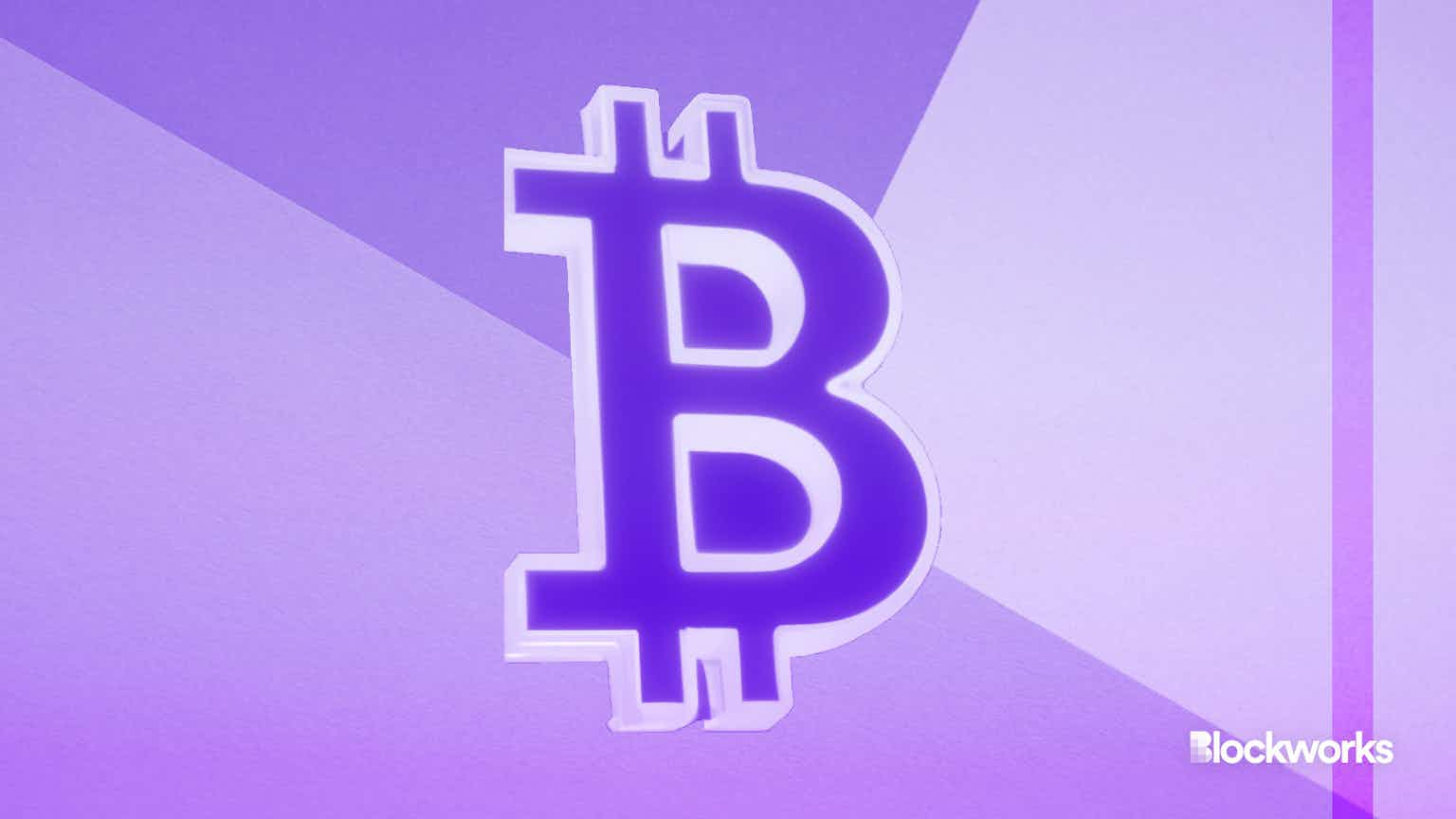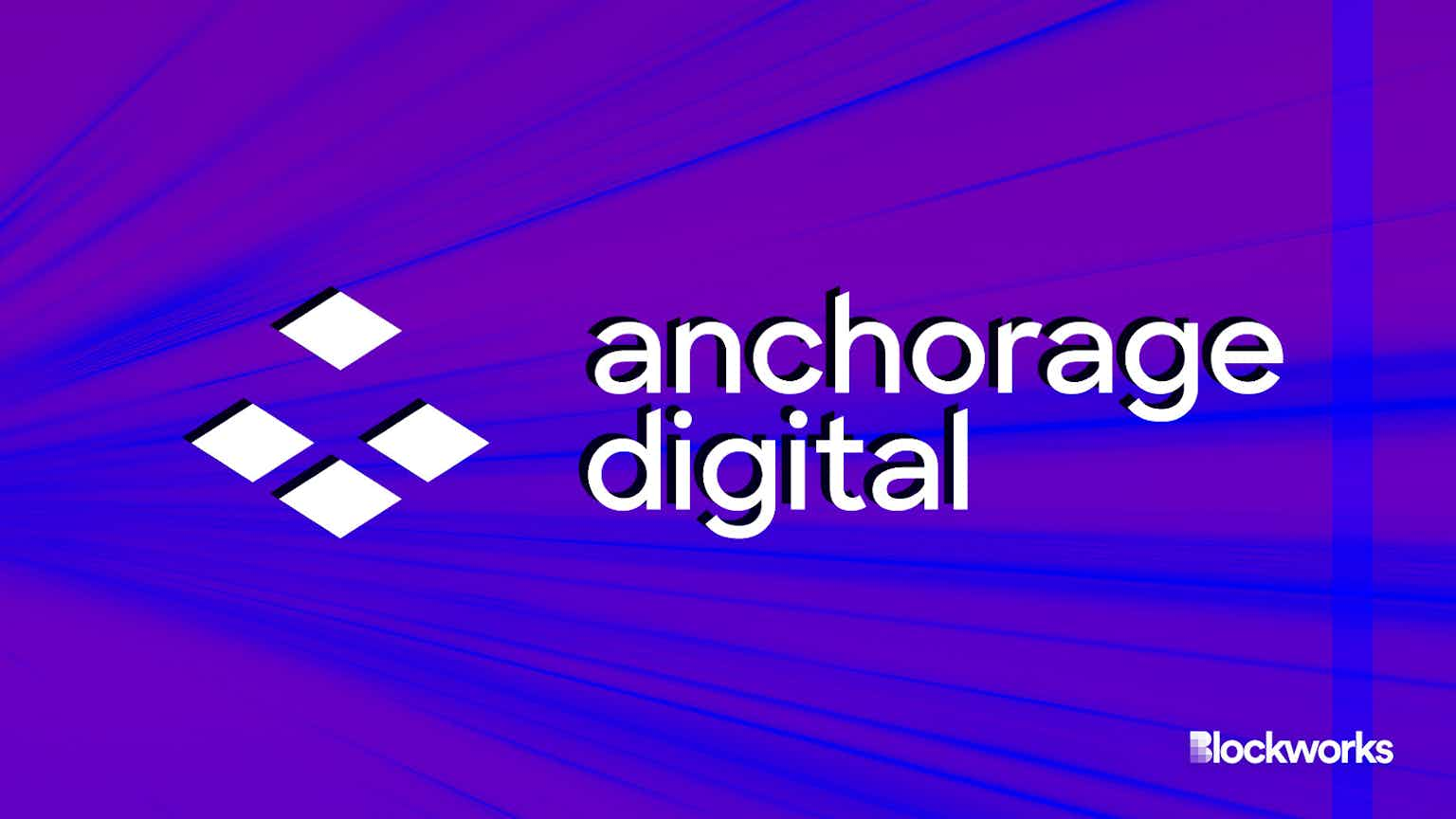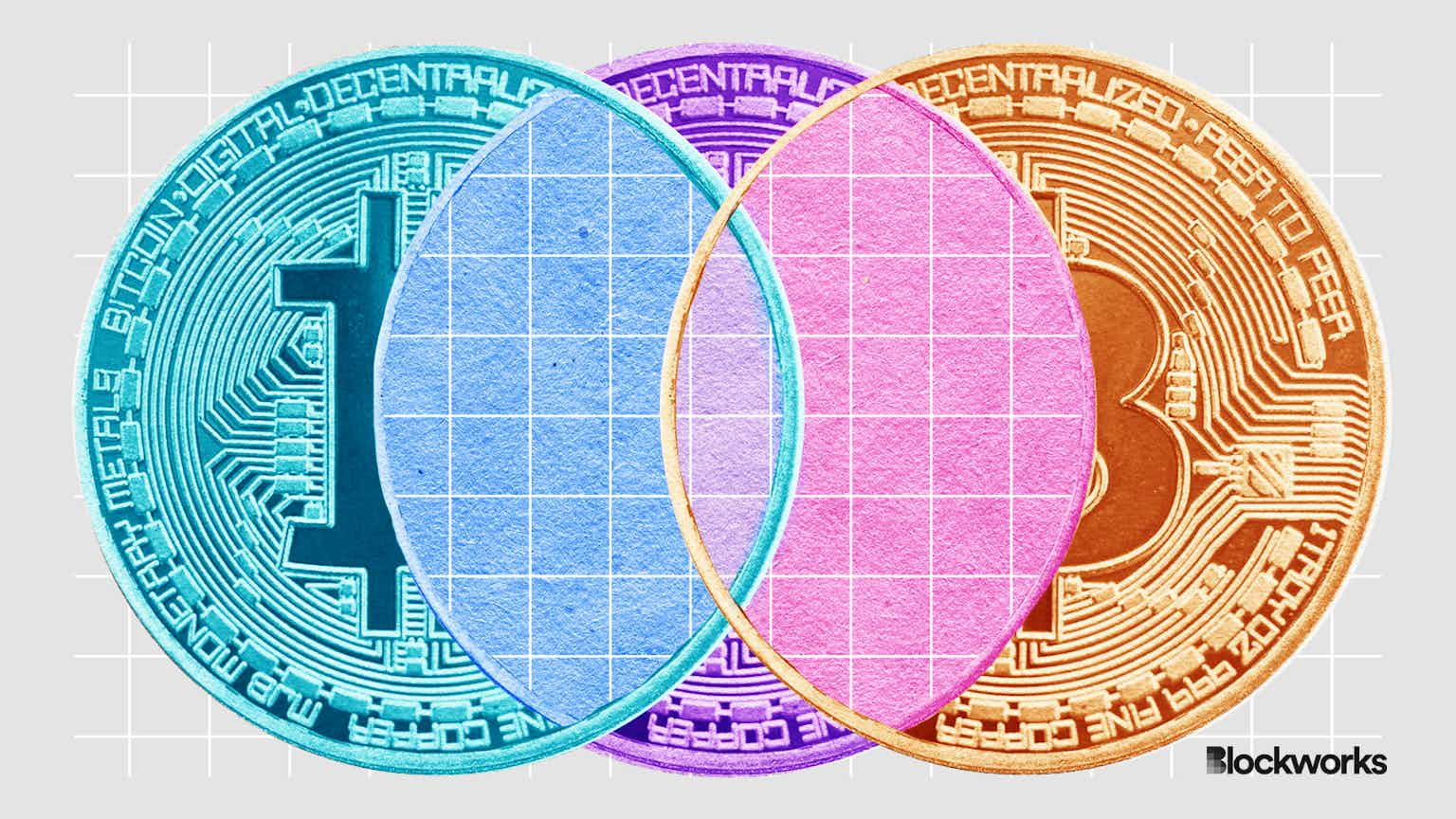Stablecoin Dominance Surges in June as Crypto Markets Shed 35%
Bitfinex’s LEO is once again the best performing cryptocurrency month over month and the only digital currency in the top 50 to gain value in June

Bitfinex’s LEO token | Source: Shutterstock
key takeaways
- Bitcoin and ether were some of the worst performing top-50 cryptocurrencies this month
- Stablecoin dominance is way up, with the top four dollar-pegged tokens now making up more than 15% of the digital asset market
Bitcoin dropped below $19,000 this morning, having shed up to 6% over the past day as benchmark indexes NASDAQ 100 and S&P 500 remain muted.
Bitcoin (BTC) is trending toward prices last seen two weeks ago when it collapsed to $17,600, its lowest since December 2020 when the bellwether digital asset was on its way toward smashing its 2018 record high.
Grimmer still, bitcoin has been one of the worst performing top-50 tokens this month, according to price data compiled by Blockworks. Today’s drop also directly follows MicroStrategy’s additional $10 million bitcoin purchase, suggesting CEO Michael Saylor bought the dip too early.
Bitcoin’s price is down about 40% since June 1, landing it in the bottom third of the top 50. Second-largest cryptocurrency ether was the fourth-worst performing, dropping 47% from $1,940 to $1,030 as of 12:30 pm ET.
For scale, the worst performing of the top 50 cryptocurrencies — decentralized finance token AAVE and BTC fork bitcoin cash — lost 51% of their value this month. Meanwhile, the tech-heavy NASDAQ 100 fell 8% in June alongside the broader S&P 500, plagued by macroeconomic factors such as inflation and persistent global supply chain headaches.
Bitcoin dominance, which measures how much of the digital asset market is BTC, dropped more than seven percentage points in June, to 43.5%. Ether dominance broke down more than twice as much, now floating around 15%.
Collectively, crypto markets tanked 35% over the month, representing $453 billion in representative value lost.
Indeed, investors once again fled volatile assets to dollar-pegged stablecoins, with Binance USD, tether, DAI and USD Coin dominance surging between 42.5 and 64.5 percentage points.
Together, those four stablecoins make up more than 15% of all cryptocurrency value right now, practically matching ether, up from 10% at the start of the month.
Bitfinex’s LEO token proves most resilient — again
As for June’s winners, cryptocurrency exchange Bitfinex’s native token unus sud leo (LEO) continues to significantly outperform the overall crypto market. It is the only top-50 cryptoasset to have gained value in June, having risen almost 12%. On average, leading cryptocurrencies (sans stablecoins and asset-backed tokens) shed 32%.
Blockworks reported almost the exact same result in the month following the disintegration of the Terra ecosystem; LEO was the only top-100 cryptocurrency in the green, although only by half a percent.
LEO is by far an outlier, even among its cohort. Rival exchange tokens issued by FTX (FTT), Huobi (HT), Binance (BNB) and KuCoin (KCS) are steeply in the red, respectively down 18%, 33%, 34% and 46%.
Bitfinex first issued LEO in 2019 in a private sale as a way to plug losses worth $850 million as a result of Polish raids on its then-payment processor Crypto Capital Corp. Those who bought LEO can recoup their investments by selling the token on public markets as its price appreciates, so the idea goes.
Similarly to other exchanges with native tokens, Bitfinex buys and burns LEO supply when trades occur on the platform. Just under 7% of LEO’s supply has been burned to date.
June’s price rise added almost $600 million to LEO’s market capitalization to make it the 15th largest token overall, ahead of prominent layer-1 tokens avalanche and matic, but still well behind Binance’s BNB.
A Bitfinex spokesperson previously told Blockworks: “LEO’s performance should be viewed as a metric of customer confidence and trust in the platform.”
They added correlation could be emerging between LEO’s price and the potential recovery of bitcoin stolen from the exchange in 2016. In February, US authorities seized $3.5 billion in BTC once belonging to Bitfinex and arrested alleged launderers, amateur YouTube rapper Heather “Razzlekhan” Morgan and her partner, Ilya Lichtenstein.
Bitfinex, a subsidiary of Tether parent iFinex, has pledged to spend at least 80% of those funds on buying and burning LEO – if the crypto indeed ends up back in the hands of the company.
Wrong-footed CoinFLEX aims to follow LEO’s path
Katie Talati, director of research at digital asset management firm Arca, agreed that authorities’ recovering bitcoin stolen from Bitfinex has been the main driver for LEO’s price appreciation this year, but noted there have been no new developments to the story since February.
“In addition, LEO is far more illiquid than other centralized exchange tokens which means it is subject to different price moves and might be why the price is more stable than others in the sector,” Talati told Blockworks in an email.
The resounding success of LEO — especially over the year to date — might bode well for smaller crypto exchange CoinFLEX. The firm is planning to issue a recovery token to replace $47 million worth of assets lost after an alleged loan deal with early crypto proponent Roger Ver went awry.
Token purchasers would help keep CoinFLEX solvent and are being offered a 20% annualized yield in return.
Arca’s Talati, however, isn’t totally sold on the idea: “I wonder who will buy the new issue since Coinflex’s customer base is much smaller, mostly market makers, almost no retail.”
It’s also unclear if investors will get their principal back as that is “based on CoinFLEX retrieving funds from their counterparty,” she added. Talati said the principal on the bad loan can be paid back in USDC or CoinFLEX’s native token FLEX, which presents risk for the investor as the token has very little liquidity.
“However, people are yield hungry and 20% is very competitive, so [we will] have to watch the sale to see what happens,” Talati said.
Start your day with top crypto insights from David Canellis and Katherine Ross. Subscribe to the Empire newsletter.





